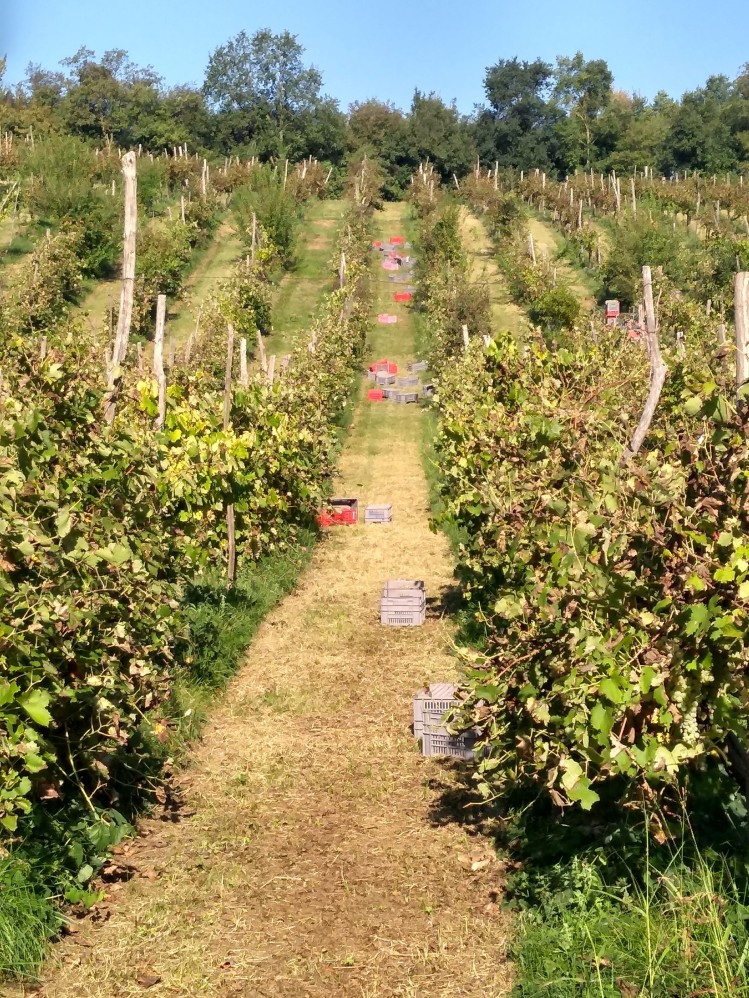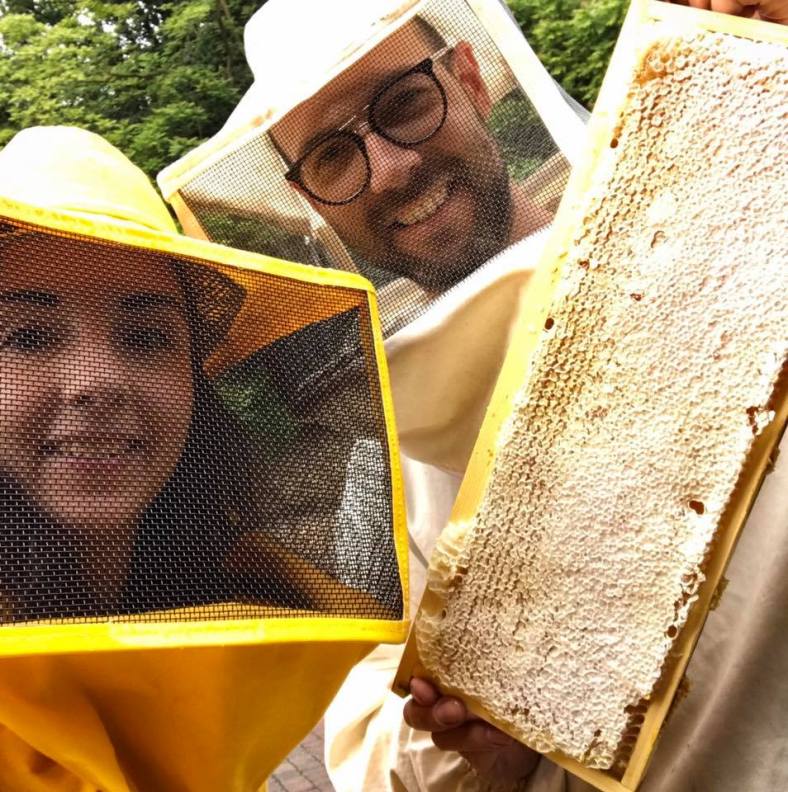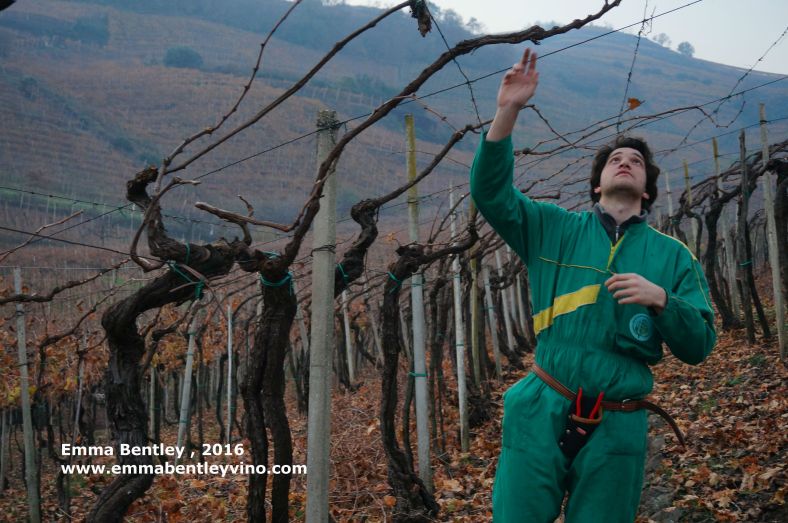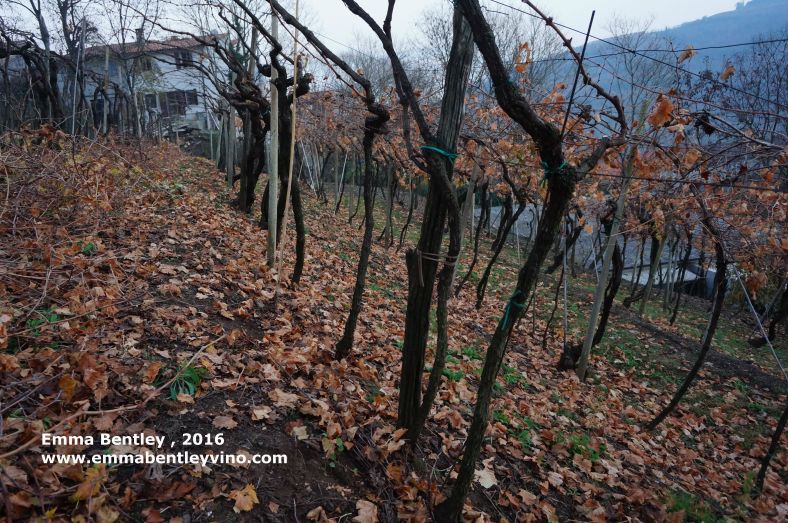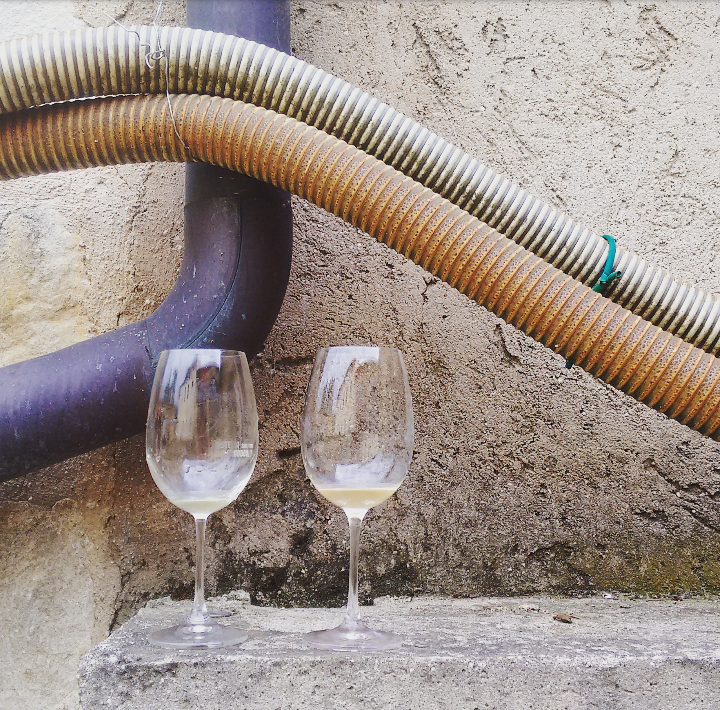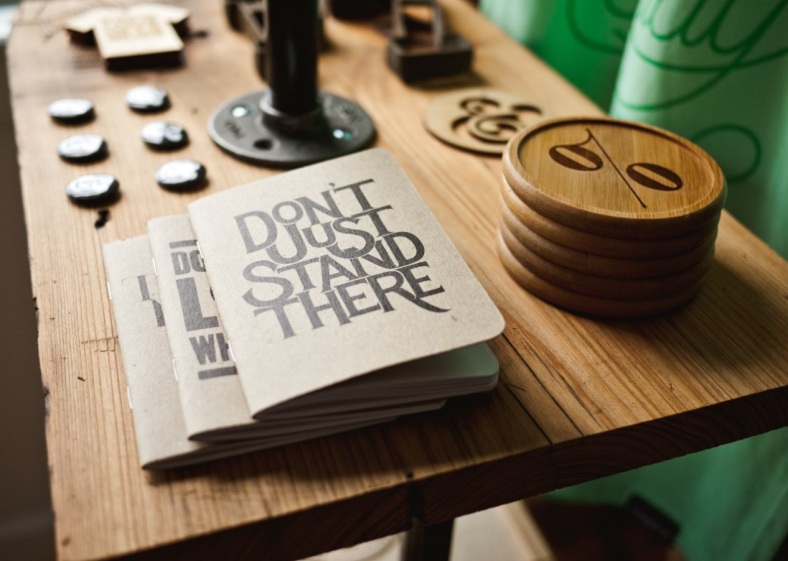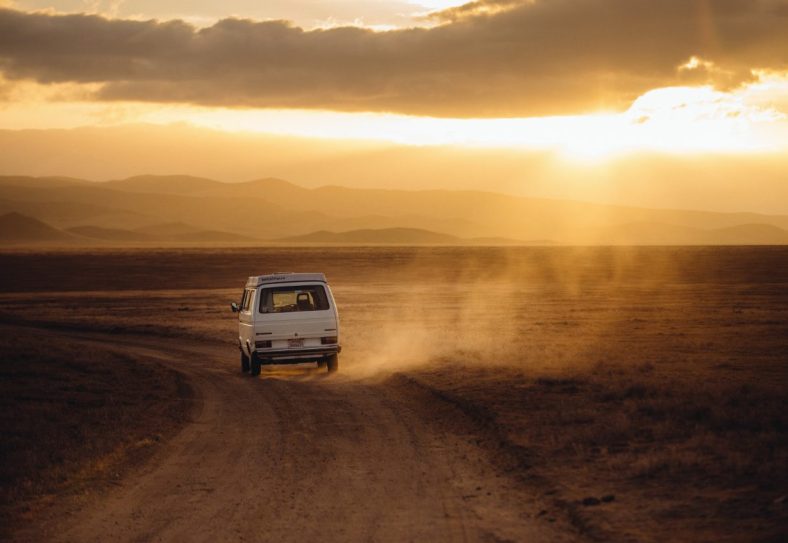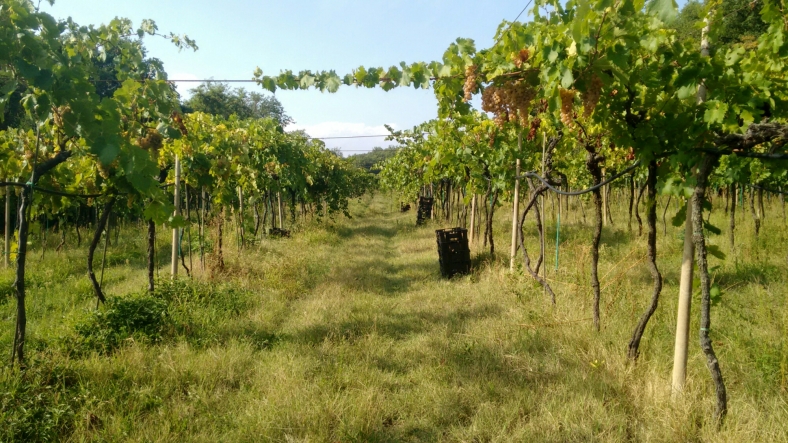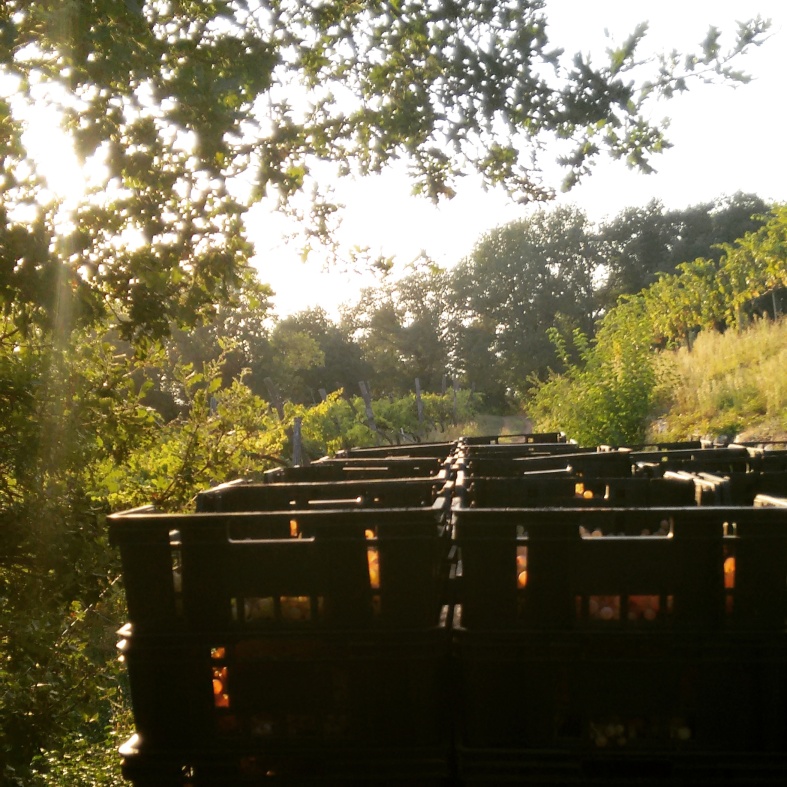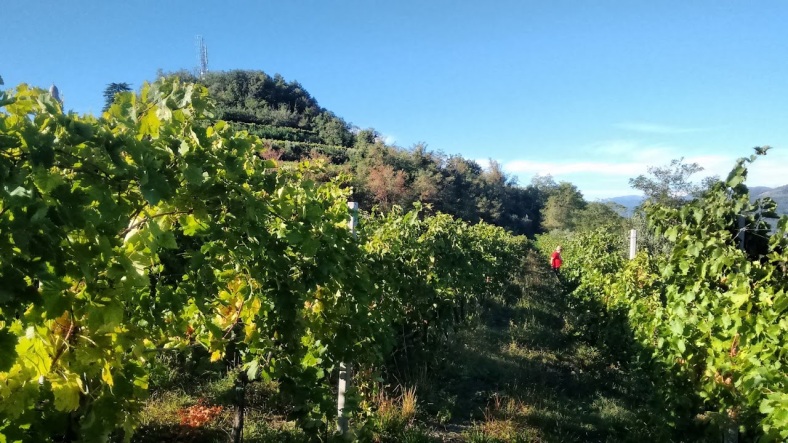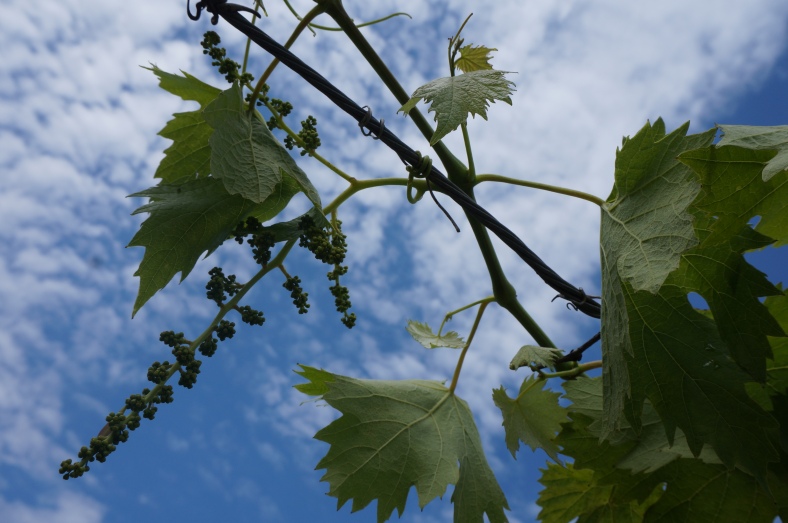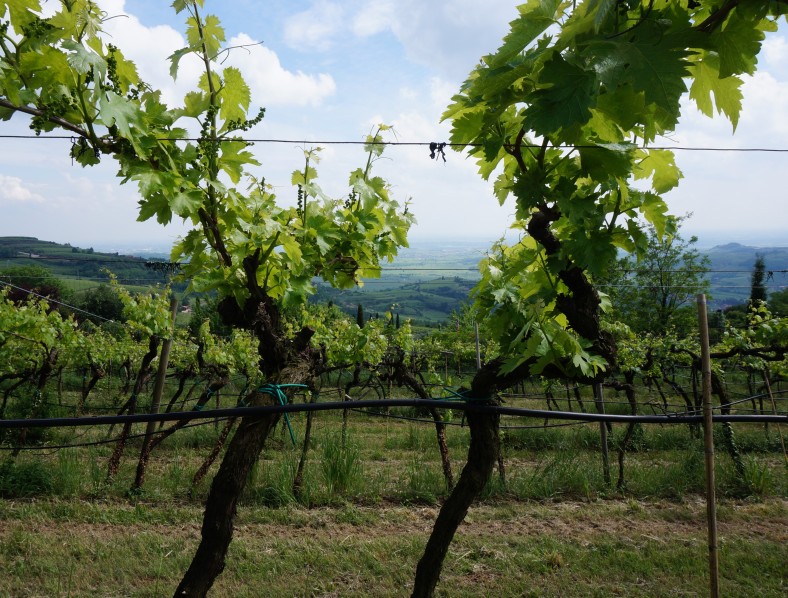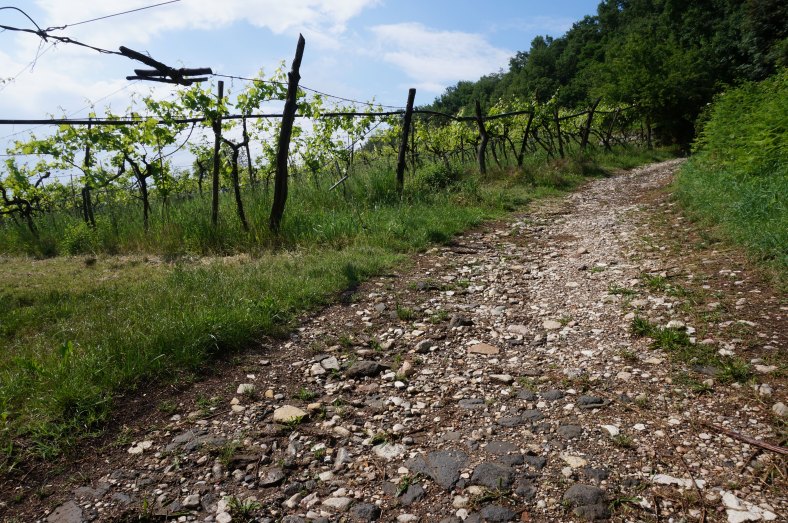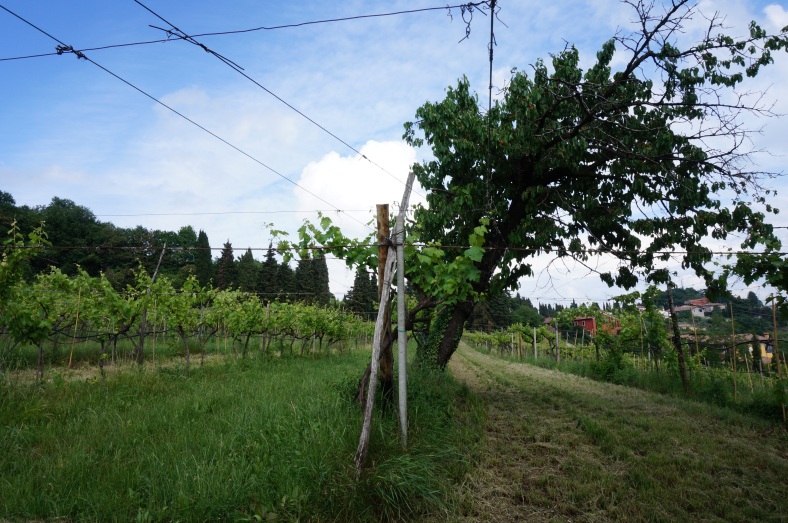Harvest 2018 is well underway and it’s looking like one of the very best years in recent memory for winemakers across most of Italy and France.
Despite a worrying amount of rain in the springtime and outbreaks of mildew/peronospora, the summer was hot, constant and mercifully allowed the grapes to come to maturity.
Largely because of last year’s frost but also because of this year’s gentle flowering season, the vines have produced a much larger quantity of grapes than usual.
So much so that winemakers have more grapes than they know what to do with! My boyfriend’s phone keeps ringing with nearby growers trying to sell him grapes because their cellar is already full. Theirs is full to the brim too!
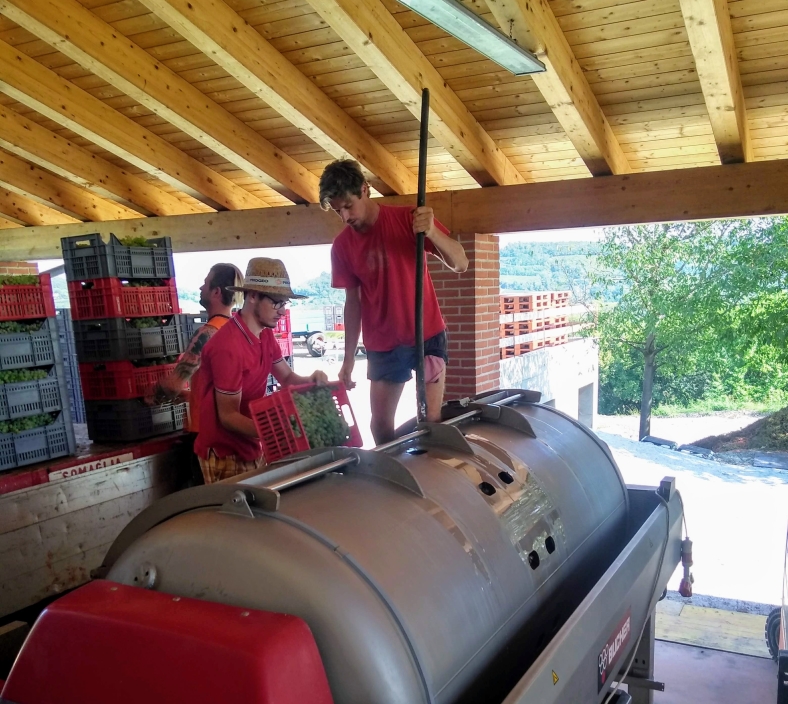
Stamping down on the grapes in order to fit them all into the press!
Today, Monday 24th September, the cantina sociale of Gambellara (a small town near Soave) didn’t open its doors to its members because it needed a day of downtime to sort and make space. It has been completely overloaded and it’s not the only one.
It’s not hard to imagine how busy the cooperatives are when you watch the video below showing the street leading to one of the Prosecco coops. A traffic jam of tractors!!
There’s another video which has gone viral because it shows a man machine-harvesting his grapes but leaving them on the ground. “You realise this is a sacrilege,” the guy filming says to the driver of the tractor. Better than seeing them rot on the plant, is the unsaid message.
One of the consequences of having so many grapes on the plant is that the sugar levels remain relatively or unacceptably (depending on your point of view) low.
We’ve heard of prosecco vineyards near us which were harvested two weeks ago (i.e. early September) but which only yielded a sugar level of between 9 and 12 babo. That means between 6 and 9% potential alcohol. Insane.
What can you do? Well, like many quality winemakers, in the summer, you do what is called green harvesting. In some of Angiolino Maule’s vineyards, he removes 50% of his grape bunches in late June/July when he’s got an idea of how the year is going. Crop thinning allows you to manage the yields better; you lose quantity but you gain quality, sugar and complexity in both the grapes and in the resulting wine.
Alternatively, you can do what we know some conventional producers in Soave are doing this year: reverse osmosis.* In this case, you keep as many grapes on the plant as possible but once the grapes have been brought into the cellar and are being vinified, you pass the must through a membrane which separates some of the water content and allows you to concentrate the sugar. All the quantity and now a wine which you can bottle at an acceptable 12% ABV.
Where I am (in the Veneto, Italy) we’ve just about finished 40% of our harvest…. and we’ve been harvesting since the last few days of August. It’ll be at least another (long) three weeks until we’ve brought the last of the grapes into the cellar.
* n.b. I know that reverse osmosis is more commonly used for reducing alcohol content, but unless I’m mistaken, it can also be used for increasing the ABV.

